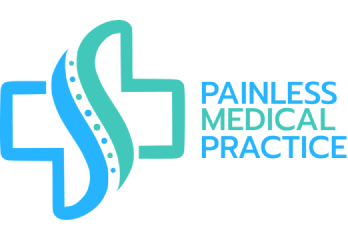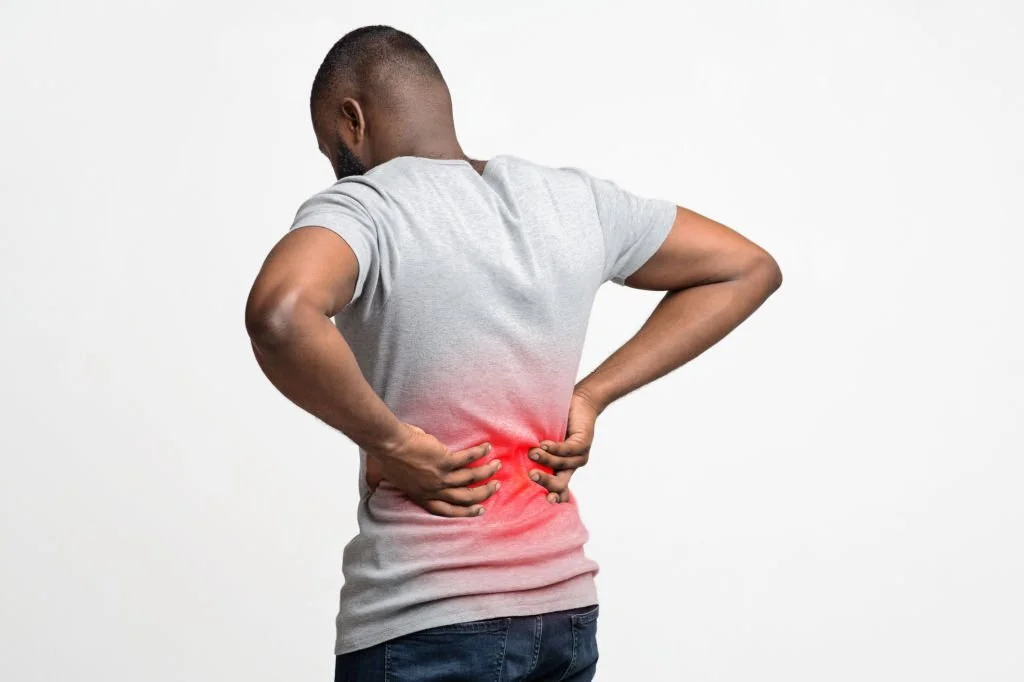The persistent torment of sciatica pain can transform even the most mundane tasks into insurmountable obstacles. However, an array of efficacious strategies exists to provide immediate relief for sciatica pain and enhance your quality of life. This article delves into the origins of sciatica nerve pain, explores methods to alleviate its symptoms, and highlights how the seasoned professionals at Painless Medical Practice can guide you toward effective sciatica pain treatment and lasting relief.
What is Sciatica Pain
Sciatica pain refers to discomfort that radiates along the path of the sciatic nerve, which starts in the lower back, passes through the hips and buttocks, and travels down each leg. The intensity of this sciatica pain can range from mild to severe and is typically caused by an underlying condition, such as a herniated disc or spinal stenosis. For many individuals experiencing sciatica nerve pain, finding effective sciatica pain relief is crucial.
Causes of Sciatica Pain
Manyfactorscontribute to the development of sciatica, eachofwhich affectsthe sciatic nerve initsown way. Understanding these causes can help identify the most effective sciatica pain treatment for relief:
- Herniated Disc: A herniated or slipped disc occurs when the inner portion of a spinal disc protrudes through its outer layer. This condition irritates the nerve roots exiting the spinal canal, causing inflammation and sciatic nerve pain. Seeking immediate relief for sciatica pain in such cases is essential to restore comfort and mobility.
- Spinal Stenosis: This condition involves the narrowing of the spinal canal, which puts pressure on the nerve roots, leading to intense sciatica nerve pain. In severe cases, this pain can interfere with daily activities and mobility. Treatments such as physical therapy and targeted sciatic nerve exercises can provide effective relief and help restore function.
- Piriformis Syndrome: The piriformis muscle, located deep in the buttocks, can sometimes compress or irritate the sciatic nerve, mimicking symptoms of sciatica. For sciatic nerve relief, stretching and targeted sciatic stretches are often recommended as part of a holistic treatment plan.
- Spondylolisthesis: This condition occurs when one vertebra shifts forward over another, compressing the nerve roots and triggering sciatica nerve pain. For such cases, strengthening exercises and sciatic nerve pain treatment options like physical therapy can be helpful.
- Pregnancy: Weight gain and increased pressure on the spine during pregnancy can result in sciatica nerve pain. Treatments often focus on gentle, non-invasive approaches, such as sciatic nerve pain exercises or low-impact activities to manage discomfort.
These underlying conditions require a tailored approach to achieve lasting sciatica pain relief. Whether through professional care or self-guided techniques, addressing the root cause is crucial to alleviating symptoms and improving quality of life.
Attaining Sciatica Pain Relief with Painless Medical Practice
At Painless Medical Practice, our board-certified anesthesiologist and pain management connoisseur, Jaroslav Tymouch, MD, is devoted to aiding patients in overcoming the torment of sciatica pain. With extensive experience in invasive procedures, medication, physical therapy, and alternative medicine, Dr. Tymouch and his team adopt a comprehensive approach to the treatment of both chronic and acute pain.
Painless Medical Practice offers a selection of treatments for sciatica pain, such as:
- Injections: Guided with x-ray or ultrasound. Steroids with local anesthetic may alleviate the sciatica pain. If it comes back in a short term BOTOX can be used for long term pain relief.
- Medications: Nonsteroidal anti-inflammatory drugs (NSAIDs), muscle relaxants, and neuropathic pain medications are among the best medicine for sciatica pain, helping to manage inflammation and discomfort.
- Laser Therapy: This advanced treatment uses medical lasers emitting a single wavelength of light, providing targeted relief for sciatic nerve pain and promoting tissue repair.
- Physical Therapy: A personalized physical therapy program, including sciatic nerve pain exercises and sciatica stretches, strengthens the muscles supporting your spine, improves posture, and reduces sciatica pain.
- Alternative Therapies: Options like acupuncture, chiropractic care, and massage therapy can complement other treatments, providing additional avenues for sciatica pain relief and sciatica supportive therapy.

Self-Guided Techniques for Sciatica Pain Relief
In conjunction with seeking professional assistance, several self-guided techniques can be employed at home to alleviate sciatica pain and promote lasting sciatica relief:
- Apply Hot and Cold Therapy: Alternating between hot and cold packs can provide immediate relief for sciatica pain by diminishing inflammation and alleviating discomfort. Use a cold pack over protected skin for 20 minutes, followed by a hot pack for 20 minutes, multiple times daily. This method is particularly useful as part of your sciatica self-care routine.
- Stretch Regularly: Gentle sciatica stretches, such as knee-to-chest stretches and hamstring stretches, can help relieve sciatic nerve pain and reduce compression. Incorporating sciatic nerve exercises into your daily routine can enhance mobility and provide ongoing sciatic nerve pain relief.
- Maintain Proper Posture: Avoid slouching and adopt good posture while sitting and standing to decrease pressure on your spine and sciatic nerve, contributing to effective sciatica supportive therapy.
- Choose the Right Footwear: Shoes with adequate arch support and cushioning play a key role in how to help sciatica pain. They reduce stress on your lower back, aiding in overall sciatica pain treatment.
- Incorporate Low-Impact Exercise: Engaging in regular low-impact activities, such as walking or swimming, can improve blood flow, promote spinal health, and provide pain relief for sciatica. These exercises also support treatment for sciatic nerve pain and contribute to long-term sciatica treatment outcomes.
By implementing these techniques, you can enhance your sciatica therapies at home, support professional interventions, and better understand how to stop sciatica pain naturally. For severe symptoms or if your sciatica pain is so bad you can’t walk, consult a medical professional for comprehensive care.
When Should I Go to the Doctor for Sciatica Pain?
If your sciatica pain persists despite self-help measures, worsens, or is accompanied by other concerning symptoms like numbness, weakness, or bowel and bladder dysfunction, it is crucial to seek professional care. Early intervention not only helps avert further nerve damage but also provides effective sciatica pain relief and long-term sciatica treatment.
For individuals seeking immediate relief for sciatica pain, consulting with a specialist ensures access to the best approaches, such as treatment for sciatica or sciatic nerve pain relief. If you’re unsure how to relieve sciatica pain or experiencing challenges such as sciatica pain so bad you can’t walk, a medical professional can recommend personalized therapies.
Contact Painless Medical Practice to schedule an appointment with Dr. Jaroslav Tymouch, who specializes in sciatica pain treatment. His approach includes options like sciatica supportive therapy or other targeted interventions, ensuring your path to effective sciatica relief and improved quality of life.
Managing Sciatica Pain
Living with sciatica pain can be challenging, but understanding what is sciatica pain and using effective strategies like sciatica self-care and sciatic nerve pain relief can help. For those needing immediate relief for sciatica pain, Dr. Jaroslav Tymouch at Painless Medical Practice offers tailored sciatica pain treatment plans, including sciatica supportive therapy and expert guidance.
Incorporating sciatic stretches, heat or ice for sciatica, or sciatica treatment exercises can further enhance your recovery, ensuring long-lasting sciatica relief and a more active, pain-free life.

